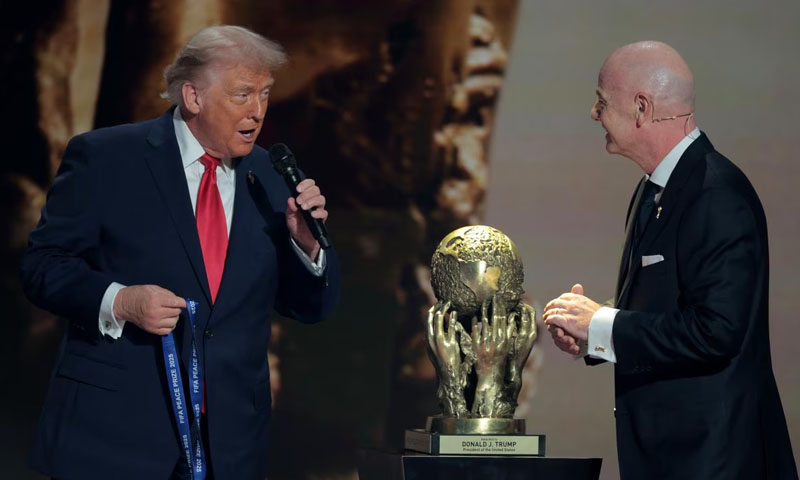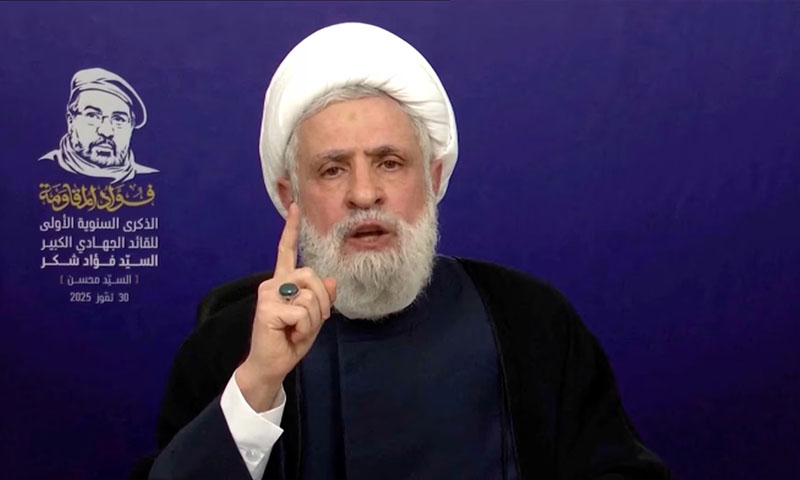- AFP
- 11 Hours ago
Sunni-led Middle East order: Trump’s Gulf tour reshapes politics
-

- Reuters
- May 18, 2025

DUBAI: Nothing captured Israeli Prime Minister Benjamin Netanyahu‘s isolation more starkly this week than the image of US President Donald Trump shaking hands with Syria’s Islamist leader Ahmed al‑Sharaa – a man Israel has branded “an al‑Qaeda terrorist in a suit.”
“He’s got the potential. He’s a real leader,” Trump told reporters after talks with Sharaa on Wednesday in Riyadh – a meeting brokered by his Saudi hosts, with whom the US president agreed a slew of arms, business and technology deals.
Trump’s whirlwind four-day tour of Saudi Arabia, Qatar and the United Arab Emirates this week was more than just a diplomatic spectacle marked by lucrative investments.
It sealed the emergence of a new Sunni-led Middle East order – one that eclipses Iran’s shattered ‘axis of resistance’, and leaves Israel sidelined, according to three regional and two Western sources.
LESS IDEOLOGICAL, MORE RESULTS-DRIVEN VISION
Amid growing irritation in Washington with Israel’s failure to reach a ceasefire in Gaza, Trump’s tour was a snub to Netanyahu, a close US ally who was the first foreign leader to visit Washington after the president returned to office in January, the sources said.
The message was clear: in Trump’s less ideological, more results-driven vision of Middle East diplomacy, Netanyahu could no longer count on unconditional US support for his right-wing agenda, the sources said.
“This administration is very frustrated with Netanyahu and that frustration is showing,” said David Schenker, a former US Assistant Secretary of State for Near Eastern Affairs under Republican former President George W Bush.
“They’re very, very transactional, and Netanyahu isn’t giving them anything right now.”
The sources said that the US was not about to turn its back on Israel, which remains a vital US ally whose support in Washington runs deep and is bipartisan.
But the Trump administration wanted to deliver the message to Netanyahu that America has its own interests in the Middle East and it does not like him standing in its way, the sources added.
US patience has been strained not just by the Israeli prime minister’s refusal to countenance a Gaza ceasefire but also his objection to US talks with Iran over its nuclear programme, according to sources familiar with the matter.
Netanyahu’s office did not respond to requests for comment. It has made no public statements on Trump’s regional visit.
A spokesperson for the White House’s National Security Council emphasized Trump was a friend to Israel.
“We continue to work closely with our ally Israel to ensure remaining hostages in Gaza are freed, Iran never obtains a nuclear weapon, and to strengthen regional security in the Middle East,” NSC spokesperson James Hewitt said.
FRICTION BETWEEN THE US AND ISRAEL
While publicly insisting US-Israeli relations remain strong, Trump administration officials have privately expressed irritation with Netanyahu’s refusal to fall into line with Washington’s positions on Gaza and Iran, according to sources familiar with the matter.
Six regional and Western sources said friction between the US and Israel was building before Trump’s regional trip.
The tension began when Netanyahu flew to Washington on a second visit in April seeking Trump’s backing for military strikes on Iran’s nuclear sites – only to discover, to his shock, that Trump was opting for diplomacy.
An unbending advocate for a hard-line stance against Tehran, Netanyahu was caught off guard, learning just hours before his meeting that negotiations were about to start.
In the following weeks, Trump’s declaration of a ceasefire with the Houthis in Yemen, rapprochement with Syria’s new Islamist leadership and bypassing of Israel on his Gulf visit showed how the traditionally close relations have become strained, the sources said.
David Makovsky, a fellow at the Washington Institute, where he directs a project on Arab-Israeli relations, said Washington and Tel Aviv “don’t seem in sync on the big questions the way they were in the first hundred days” of Trump’s presidency.
GAZA PROVES DIVISIVE
During his election campaign, Trump made clear he wanted a ceasefire in Gaza and the hostages there released before he returned to the White House.
But months into Trump’s presidency, Netanyahu has continued to defy ceasefire calls, expanded the offensive, and offered no endgame or a post-war plan after 19 months of conflict. The death toll in Gaza has passed 52,900 in recent days, according to local health officials.
The war – which has sparked international outcry over the humanitarian crisis in Gaza – was triggered by Hamas’ Oct 7, 2023 attack on Israel that killed around 1,200 people and captured some 250 hostages.
Any hope that Trump could use his regional visit to cement his image as a peacemaker and announce a deal to end the bitterly divisive war were dashed.
Instead, Netanyahu – who is charged with war crimes in Gaza by the International Criminal Court – has doubled-down on his aim of crushing Hamas. Netanyahu is also on trial in Israel over corruption charges, which he denies.
As Trump wrapped up his visit, Israel launched a new offensive on Friday in Gaza. Israeli strikes have killed hundreds of Palestinians in recent days.
ABRAHAM ACCORDS
Trump’s other key priority – expanding the Abraham Accords establishing diplomatic ties between Israel and Arab states to include Saudi Arabia – has also been blocked by Netanyahu’s intransigence.
Riyadh has made it clear it will not normalize relations with Israel until the war has ceased and there is a path to Palestinian statehood, something Netanyahu rejects.
“He’s got no strategy, no day-after plan on Gaza,” Schenker said. “And he’s standing in the way.”
Publicly, Trump himself has dismissed any talk of a rift. In an interview with Fox News, broadcast after the regional visit, Trump denied being frustrated with Netanyahu, who he said faced “a tough situation” over the war in Gaza.
But Trump is forging ahead without Netanyahu. With unapologetic self-interest, the American president is driving a realignment of US diplomacy toward wealthy Sunni states, anchored by oil-rich Riyadh.
One senior regional source said Trump’s visit had crowned the influential role of Saudi Arabia as the leader of the Sunni Arab world. By contrast, years of Iranian overreach – and Israel’s heavy military blows to its proxies Hamas in Gaza and Hezbollah in Lebanon – have left Shi’ite regional power Tehran diminished.
“Iran had the leading role; now Saudi Arabia has entered with other tools: the economy, money, investment,” the source said.
SUNNI ASCENDANCY
Although Netanyahu led the fight against Iran, the new regional order is being shaped in Riyadh, Doha and Abu Dhabi.
These Gulf monarchies are eager to gain access to sophisticated weaponry to shield them from attacks by Iran and its proxies, as well as to secure advanced US chips and AI technology.
They have found a willing partner in a US president whose foreign policy can sometimes blur with his family’s financial interests.




